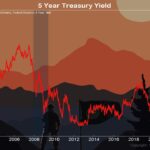Steve H. Hanke, a Senior Fellow and Director of the Troubled Currencies Project at the Cato Institute, breaks-down the misery index. Read more here for the misery index on a global scale.
The Great Recession grinds on. And as it does, politicians of all stripes ask, usually behind closed doors, “Just how miserable are our citizens?” The chattering classes offer a variety of opinions. As it turns out, there is a straightforward way to measure what is termed the misery index.
The late Arthur Okun, a distinguished economist who served as chairman of the President’s Council of Economic Advisers during President Johnson’s administration, developed the original misery index for the United States. Okun’s index is equal to the sum of the inflation and unemployment rates.
Harvard Professor Robert Barro amended the misery index by also including the 30-year government bond yield and the output gap for real GDP. Barro used his index to measure the change in misery during a president’s term.
From these metrics, we would anticipate that if there were a high level of misery in a country, and the current politicians increased the level of misery, then this increase would be borne out by looking at the polls. In other words, we expect citizens to be aware of misery, and approve or disapprove accordingly.
The data in the misery index chart speak loudly. Contrary to left-wing dogma, the Reagan “free-market years, ” were very good ones. And the Clinton years of Victorian fiscal virtues– when President Clinton proclaimed in his January 1996 State of the Union address: “the era of big government is over” — were also very good ones.





